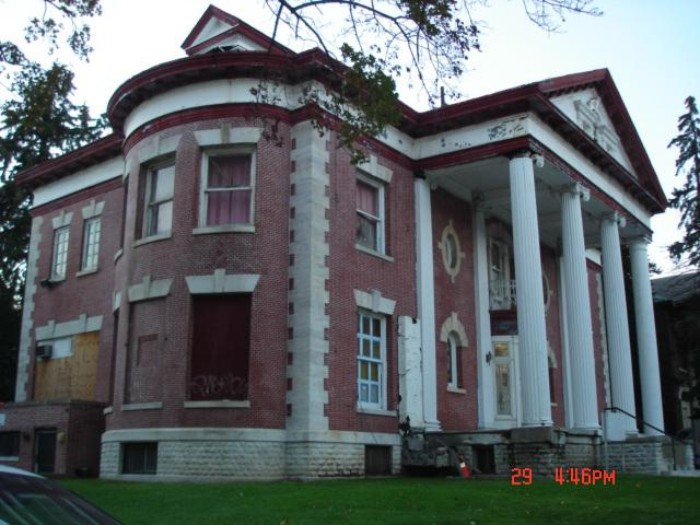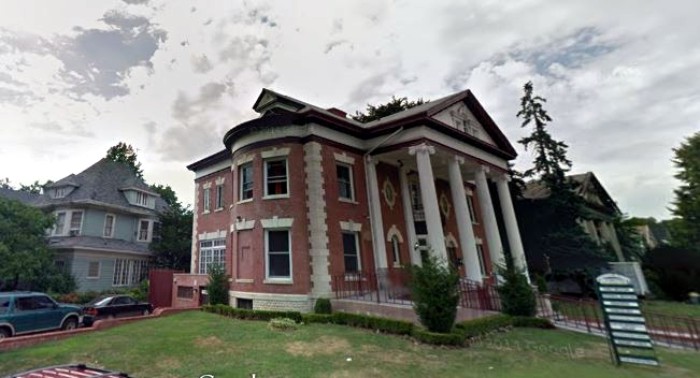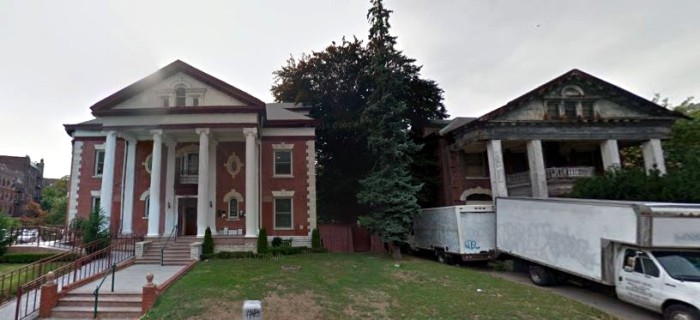Building of the Day: 1010 Ocean Avenue
Brooklyn, one building at a time. Name: Thomas H. Brush house, then Temple Beth Ohr, then Redeption Gospel Outreach, now doctors’ offices Address: 1010 Ocean Avenue Cross Streets: Corner Newkirk Avenue Neighborhood: Ditmas Park Year Built: 1899 Architectural Style: Colonial Revival Architect: George Palliser Other Buildings by Architect: Many houses in the Barnum/Palliser Historic District…


Brooklyn, one building at a time.
Name: Thomas H. Brush house, then Temple Beth Ohr, then Redeption Gospel Outreach, now doctors’ offices
Address: 1010 Ocean Avenue
Cross Streets: Corner Newkirk Avenue
Neighborhood: Ditmas Park
Year Built: 1899
Architectural Style: Colonial Revival
Architect: George Palliser
Other Buildings by Architect: Many houses in the Barnum/Palliser Historic District in Bridgeport, CT, as well as other buildings in historic districts in Bridgeport, Westport and Waterbury, CT. Also houses in Main, Indiana, Vermont and Utah.
Landmarked: Yes, part of Ditmas Park HD (1981)
The story: Connecticut architects George and Charles Palliser were busy men during the latter half of the 19th century. In 1976, George had published an architectural style book called “Model Homes for the People.” In it he illustrated plans and patterns for housing. He boasted that the 25 page book was sent to every state and territory in the Union, and even in the provinces. A year later, he and his brother Charles formed their company, Palliser, Palliser & Co. and set out to write and publish many more books of model houses and architectural how-to’s. Between 1876 and 1900, they published at least ten, including on all-purpose guide for towns and cities called “Palliser’s Court Houses, Village, Town and City Halls, Jails and Plans of Other Public Buildings,” which was published in 1889.
That year also saw the brothers established their offices in New York City. Their homes had catapulted them into the big city, where they hoped to get some good commissions. They had already been very successful building nice suburban single family houses in Connecticut cities like Bridgeport and Westbury. One of their New York clients was a wealthy builder named Thomas H. Brush. He and his son-in-law, George Van Ness, had purchased adjoining lots on Ocean Avenue, and hired George Palliser to design two spacious and elegant homes for them. The homes were to complement each other in style.
Ocean Avenue was one of the most elegant thoroughfares in Flatbush. The late 1900s, early 20th century saw large mansions and elegant suburban houses built all along the Avenue’s length. Most of those homes have now been replaced by apartment buildings, but this two block stretch between Newkirk and Dorchester Roads shows what much of it used to look like. It was a suburban enclave with large houses with large lawns. Many of Brooklyn’s wealthier people were moving to the exclusive suburbs of Flatbush, where they could have the best of suburban, still within the borders of New York City.
The Brush house is the better of the two houses, and has had a happier history. The Van Ness house is a separate topic. The Colonial Revival style encompasses a lot of different sub styles from the 18th century, and here, Palliser gave Mr. Brush a Georgian style brick house. The elegant columns and capitals in the front really make it. They are in the Ionic style, and support that huge portico. The house was written up in “Scientific American” magazine in 1901, in which was reported that the capitals had been carved by prominent Boston sculptor Charles Emmel.
Colonial Revival is also one of those styles where you can get away with a lot of adaptation. A true Georgian house might not have that great rounded bay on the side, or the window treatments under the portico, or those wild side dormers, but it all works here, in a house near neighborhoods like Prospect Park South, where Colonial Revival elements are on steroids. Out of place? No, not here.
The magazine article also noted that the house had all of the best in interior amenities, including silver plated exposed pipes in the bathrooms. Those are probably long gone, as Thomas Brush went into foreclosure on the house in 1913. The house went through a couple of other owners, and in 1939 became Temple Beth Ohr. It remained a temple for years, up until the 1990s, when the shrinking congregation could no longer afford the upkeep on the building. They sold it to Redemption Gospel Outreach, a Pentecostal church, which in turn lost the building less than 20 years later, and it was boarded up.
The house was purchased by Dr. Gerald Valme in 2008. He told Christopher Gray, in his “Streetscapes” column in the New York Times that he intended to use the building for his family practice. At that time, in 2008, he also said that much of the woodwork and interior detail was still there, and would be restored. Today, the house has a large roster of doctor’s offices, and is looking much better. Unfortunately, the Van Ness house next door is still in pretty bad shape. Hopefully good things can come its way before it’s too late.
(2006 photograph: Christopher Bride for PropertyShark)











I love both of these buildings, but am far more curious about the Van Ness house. Hope that one’s up next?
A bit of a fixer-upper, but absolutely beautiful.